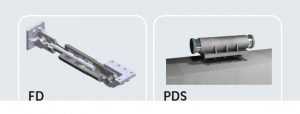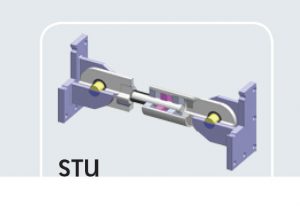Protection principle: the ISOSISM® range
Leveraging its wealth of knowledge and experience in building and equipping structures, Freyssinet is a trailblazer in developing earthquake isolation devices and currently offers an end-to-end range of special products known as ISOSISM®.

These devices can be used alone or in combination to achieve the most effective and appropriate protection for each project.
Seismic protection is based on three fundamental operational modes which are:
DISSIPATION
- Part of the energy generated by an earthquake can be dissipated by dampers to minimise the effects on the structures.
Dampers offer only very low resistance to slow movements and are completely effective during quick stresses (earthquakes, boat impacts, etc.). - Dampers can be used in combination with an isolation system, especially high damping elastomeric bearings, to reduce structural displacement while limiting the stresses to which structures are subjected.
- Dampers can be installed to significantly reduce the cost of structural repairs following an earthquake. In addition, they enable sensitive buildings, such as hospitals, to continue operating. Furthermore, they can provide effective protection for existing structures that were not originally designed to withstand seismic activity.

ISOLATION
- The structure is isolated from the movement of the ground using flexible connections, mainly reinforced elastomeric bearings or sliding systems, to increase the fundamental period of vibration of the structure to be protected and reduce the response to seismic acceleration. Acceleration can be divided by a factor of two or three on structures featuring such systems.
- Isolator efficiency is directly related to horizontal stiffness and leads to major displacement of the structure during a seismic event.
- The effects of structural isolation therefore result in a clean low frequency, low acceleration and high relative displacement.

CONNECTION
A value-added approach is to limit the seismic displacement of structures in order to simplify the devices used to create a connection with the neighbouring structures (grids, expansion joints, etc.). In such cases, designers will either use:
- Mechanical bearings to transfer all the service and seismic forces from the foundations to the structures (passive protection).
- Seismic connectors, whose distinguishing feature is that they provide only very low resistance to slow displacements due to temperature variations, shrinkage and creep. They create a robust connection between the superstructure and the supporting structures during quick displacements mainly associated with seismic events.
Connectors also have the advantage of sharing major horizontal seismic forces among all supporting structures (piers) where they are fitted.

Project Reference
